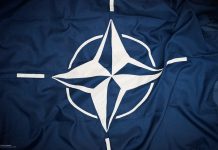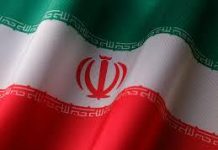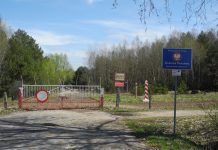
The upcoming U.S.-Russia summit in Alaska is taking place in a location where East meets West—a site historically linked to both nations as a Cold War frontier for missile defense, radar stations, and intelligence operations.
Whether the talks can pave the way for peace in Ukraine, more than three and a half years after Russia’s invasion, remains uncertain.
Here’s what to know about the meeting between Russian President Vladimir Putin and U.S. President Donald Trump, the first summit between the two leaders in four years:
When and where is it happening?
The summit is scheduled for Friday in Alaska, though the exact venue has not been disclosed. This marks Putin’s first visit to the U.S. since attending the U.N. General Assembly in New York in 2015. Because the U.S. is not part of the International Criminal Court, which issued a war crimes warrant for Putin in 2023, it is not required to detain him.
Will Zelenskyy attend?
The meeting will involve only Putin and Trump, despite early speculation that Ukrainian President Volodymyr Zelenskyy might join. The Kremlin has consistently resisted a Putin-Zelenskyy meeting until a peace agreement between Russia and Ukraine is ready for signing. Last week, Putin stated that meeting Zelenskyy is possible but that “certain conditions need to be created,” which are still far from being met. This has raised concerns about Ukraine being excluded from negotiations. Ukrainian officials recently consulted European allies, who emphasized that Kyiv must be part of any peace discussions.
Why Alaska?
This will be the first visit by a Russian leader to Alaska, which was once part of the Russian Empire until being sold to the United States in 1867 for $7.2 million. Russians colonized Alaska starting in the 18th century, and the sale later became a source of regret due to the state’s abundant natural resources. Following the USSR’s collapse, Alaska became a symbol of nostalgia and humor in Russia. Sam Greene of King’s College London noted the symbolism of holding a summit on Ukraine in Alaska is striking, “as though designed to demonstrate that borders can change, land can be bought and sold.”
What is on the agenda?
Trump has expressed growing frustration with Putin over Russia’s continued attacks on Ukrainian cities. Kyiv has agreed to a ceasefire as a step toward peace, but Moscow’s conditions—such as withdrawing from the four annexed regions, halting mobilization, and freezing Western arms supplies—are unacceptable to Zelenskyy. For a comprehensive peace, Putin is demanding Ukraine formally cede the annexed areas, including Crimea, renounce NATO membership, limit its armed forces, and recognize Russian alongside Ukrainian as an official language.
Zelenskyy insists that any agreement must include strong security guarantees to prevent future Russian aggression. Meanwhile, Putin has warned Ukraine that conditions for peace could become more stringent as Russian forces expand their control in contested regions. Some analysts suggest Russia might trade recent territorial gains for recognition of the annexed regions. Zelenskyy has firmly rejected ceding Ukrainian land, while Trump indicated that some territorial exchanges could occur.
What are expectations?
Putin views the summit as an opportunity to solidify Russia’s territorial gains, keep Ukraine out of NATO, and prevent Western troops from being stationed there, gradually bringing the country back into Russia’s sphere. The meeting represents a diplomatic win for Putin, who has faced international isolation since the invasion. The Kremlin portrays the talks as part of broader U.S.-Russia engagement on global issues, with Ukraine as only one element.
European officials and Ukraine warn that a summit without Kyiv could pressure Ukraine into unfavorable concessions. Zelenskyy stated, “Any decisions that are without Ukraine are at the same time decisions against peace. They will not bring anything.” European leaders emphasized that sustainable peace requires respecting international law and not rewarding aggression. NATO Secretary-General Mark Rutte suggested Trump is testing Putin’s willingness to negotiate seriously, with Ukrainian and European involvement expected if the talks move forward.
In the past week, Putin also spoke with leaders from China, India, Brazil, South Africa, Kazakhstan, Uzbekistan, Belarus, and Kyrgyzstan, potentially preparing his allies for a possible settlement, according to pro-Kremlin analyst Sergei Markov.





